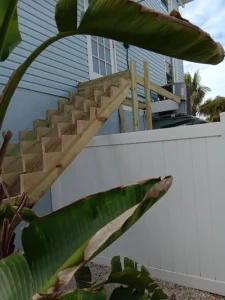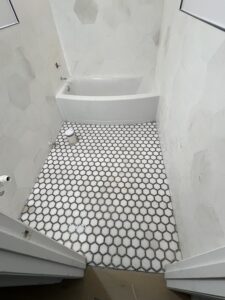
Image by Canva
Achieving a smooth, seamless finish on drywall is a crucial step in the interior finishing of any space, impacting both aesthetic and structural integrity. One of the essential materials for this process is drywall paper tape, a tool favored by professionals for its ability to strengthen and smooth over drywall joints. This guide will walk you through why drywall paper tape is important and how to apply it correctly.
What Is Drywall Paper Tape?
Drywall paper tape serves as a specialized strip intended for concealing the joints where two boards meet during drywall installation. Unlike its fiberglass mesh counterpart, paper tape lacks adhesive properties and relies on the joint compound, also known as mud, to adhere to the drywall surface. The primary function of paper tape is to prevent cracking along the seams by providing a continuous, uniform surface across the joints.
It is favored by many professionals for its superior ability to blend seamlessly with the surrounding drywall, particularly in corners and areas less susceptible to movement, thereby ensuring a smoother and more concealed finish.
How to Apply Drywall Paper Tape Properly
The correct application of drywall paper tape is essential for preventing future cracks and achieving a professional-quality finish. Mastery in applying drywall paper tape can significantly impact the longevity and appearance of your walls or ceilings. Here are detailed steps to guarantee optimal application:
1. Prepare the Surface
Before applying drywall paper tape, it’s crucial to make sure the seam is clean and ready for tape application. Start by using a drywall sanding block or sandpaper to eliminate any rough edges or protruding bits of drywall paper along the seam. This step is essential for creating a flat surface that will enable the tape to adhere properly.
After sanding, take a clean, damp cloth to remove any dust or debris from the seam. This ensures better adhesion of the joint compound and tape. Additionally, be sure the surface is completely dry before proceeding, as moisture can affect the adhesion and drying of the joint compound.
2. Apply Joint Compound
A joint compound, also known as mud, is a crucial component in the drywall taping process. To apply it properly, scoop a small amount of joint compound and place it on the edge of a drywall trowel or putty knife. Hold the tool at a slight angle and apply the joint compound along the seam with smooth, even strokes. Aim to create a thin, uniform layer of compound that fully covers the seam without bulging.
It’s essential to spread the compound evenly to ensure proper adhesion of the drywall paper tape in the next step. Take care not to exert excessive pressure, as this can cause the compound to squeeze out from under the tape.
3. Position the Tape
Drywall paper tape should be positioned carefully along the length of the seam, making sure it is centered and straight. Unroll the tape and gently press it into the wet joint compound using your fingers or a drywall knife. Start from the center of the seam and work outward, smoothing out any wrinkles or bubbles as you go.
Proper positioning and adherence of the tape are crucial for preventing cracks and achieving a seamless finish once the joint compound dries. Take your time during this step to make sure the tape is applied evenly and securely along the entire length of the seam.
4. Embed the Tape
Once the drywall paper tape is positioned along the seam, it’s essential to embed it firmly into the wet joint compound. Utilize a drywall trowel or putty knife to press the tape into the compound, ensuring strong adhesion to the surface. Work from the center of the seam outwards, using smooth, even strokes to remove any excess compound and guarantee proper adhesion of the tape.
Pay close attention to the edges of the tape to prevent any lifting or peeling, as this can result in weak spots in the finished seam. Embedding the tape is crucial for creating a strong, crack-resistant bond between the drywall panels.
5. Apply Additional Joint Compound
After embedding the drywall paper tape, apply a second layer of joint compound over the top to reinforce the seam further. Extend the compound slightly beyond the edges of the first layer to ensure full coverage and proper blending with the surrounding drywall.
Spread the compound smoothly and evenly with long strokes while feathering the edges to achieve a seamless transition. This additional layer of compound helps to fully embed the tape and fill in any gaps or imperfections, resulting in a smooth, uniform surface once the compound dries.
6. Feather the Edges
Feathering the edges of the joint compound is an essential step in achieving a seamless finish. Use the drywall trowel or putty knife to gently feather the edges of the compound outward from the center of the seam. This technique helps to blend the compound into the surrounding drywall, which creates a smooth transition and minimizes any visible lines or ridges.
Take care to feather the edges evenly to avoid creating noticeable bumps or uneven areas on the finished surface. Proper feathering guarantees a professional-looking result and enhances the overall appearance of the drywall installation.
7. Let it Dry
Once the joint compound is applied, allow it to dry completely before proceeding with sanding or additional coats. Drying times may differ depending on factors such as humidity and temperature, so refer to the manufacturer’s instructions for guidance. It’s essential to allow the compound ample time to dry thoroughly to prevent any cracking or shrinking once sanding begins.
Avoid disturbing the compound while it’s drying to ensure a smooth, even finish. Once the compound is fully dry, it should feel firm to the touch and have a consistent color and texture throughout.
8. Sand and Finish
After the joint compound has dried completely, use a drywall sanding sponge or sandpaper to eliminate any rough spots or imperfections. Sand the dried compound gently, using light pressure and smooth, circular motions to avoid damaging the tape or underlying drywall. Be sure to sand the entire area evenly to create a seamless surface that blends seamlessly with the surrounding drywall.
Once the surface is smooth and free of imperfections, wipe it down with a clean, damp cloth to get rid of any dust or debris before applying additional coats of joint compound or finishing treatments. Sanding and finishing are crucial final steps that help to achieve a professional-looking result and guarantee the longevity and durability of the drywall installation.
FAQs

Image by Canva
What causes drywall tape to fail?
Drywall tape can fail when it doesn’t stick properly or loses its grip over time. Professionals make sure this doesn’t happen by preparing the wall carefully and using good-quality materials. They know how to apply the tape and joint compound correctly to make it strong. Choosing a reliable professional ensures your drywall tape stays put and your walls look great for a long time.
What's the difference between paper tape and mesh tape?
Paper tape is non-adhesive and requires a joint compound to stick to the drywall, providing a smoother finish, especially in corners. Mesh tape is self-adhesive and offers more flexibility but can be more susceptible to cracking if not properly coated.
How long should you let drywall tape dry?
Proper drying time for drywall tape is crucial to ensure a strong and durable bond. Typically, it’s recommended to allow drywall tape to dry for at least 24 hours before proceeding with further finishing or painting. However, the exact drying time may differ depending on factors like humidity levels and the type of joint compound used.
Conclusion
Proper application of drywall paper tape is essential for achieving a seamless and sturdy wall and ceiling finish. Hiring a professional ensures adherence to the correct procedures and allows sufficient drying time between applications. This guarantees a smooth, crack-free finish, primed and ready for painting.
Miller86 provides quality materials and guidance to help you achieve the best results for your construction and renovation projects. For all your drywall needs, including paper tape, joint compounds, and professional advice, contact us today.





